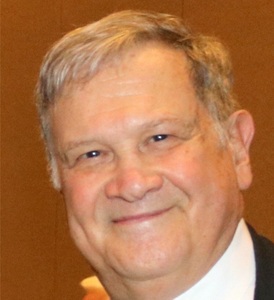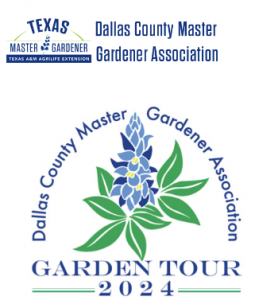PSST . . . WHO DO YOU LOVE?
Pollinator Citizen Science Project
by Jo Lynne Merrill
Okay, so we all know milkweed is the host plant species for the monarch butterfly. But monarchs sip nectar from blossoms on other plants. And there are lots of pollinators besides monarch butterflies. In pursuing our Master Naturalist mission to educate the public, how do we justify our teaching and recommendations of certain plants to attract pollinators in the garden?
Scientists at Texas A&M AgriLife Research and Extension Center noticed a lack of data-supported information to share about which plants to use to attract which pollinators. Thus was born a multi-year citizen science project to enlist and train members of the community to determine the relative attractiveness of a large group of commercially available nectar-bearing garden plants to different types of pollinators. The Pollinator Project is a collaboration between Dr. Mike Merchant and Erfan Vafaie at AgriLife, Dr. Eric Rebek at Oklahoma State University, Dr. Adam Mitchell at Tarleton State University, and Drs. Scott Longing and Vikram Baliga at Texas Tech University.

Mike Merchant
A protocol was developed including training materials for volunteer observers, a post-training test the passing of which is required, and a detailed observation report form to be completed and submitted with each observation. (See below for more info on training and volunteer hours opportunities.)
The first group of citizen scientists began their observations in the spring of 2019 and continued through the blooming season into the fall. Data from the 2019 observations have been compiled and are being analyzed.
However, preliminary findings from the 2019 data were recently released. A total of 7990 sixty-second observations were made in Texas and Oklahoma between 5-15-2019 and 10-22-2019. Of those, 3581 verified observations were of some 215 different species of blooming plants. The largest numbers of observations were of the plant families Lamiaciae and Compositae , although that indicates only what plants were most observed and not which plants were most attractive to pollinators. Pollinators defined as “medium bee” and butterflies were the most frequently observed. White/pink flowers were the most frequently visited by pollinators followed by yellow, purple/indigo/violet, and red blooms in that order. More details are provided here.
Observations for the project for this year are now underway and will continue through October, 2020. At present 282 volunteers have been trained, passed their exam and are certified to submit observations. Of those, 172 are Master Naturalists! In addition, 76 are Master Gardeners and the remainder are students or garden enthusiasts in the observation area. As of April 30, 2020, the certified observers have submitted 1,527 observations, 1,135 of which were submitted by Master Naturalists. As of that date the following pollinators have been observed:.
- 1,643 honey bees
- 90 bumblebees
- 445 “other” bees
- 151 wasps
- 814 flies
- 251 butterflies and moths
- 180 beetles
YOU CAN HELP! Training is done online by video here and takes about an hour. The final exam is found on the same website, and the result is reported to your email within minutes. It can be retaken until a passing grade is achieved. Once certified, volunteer observers may select the 2×2 foot blooming patch of their choice and begin making observations immediately (with the help of a downloadable pollinator identification handout) and submitting their observations on the form provided on the website. Each observer may observe as many 2×2 foot blooming patches as they wish.
This valuable citizen science project is one great way to rack up volunteer hours, sixty-second observations at a time. The more observers, and the more observations, the better the data to help us all educate the public and plant our own pollinator gardens with the right scientifically proven pollinator plants.
 North Texas Master Naturalist
North Texas Master Naturalist

